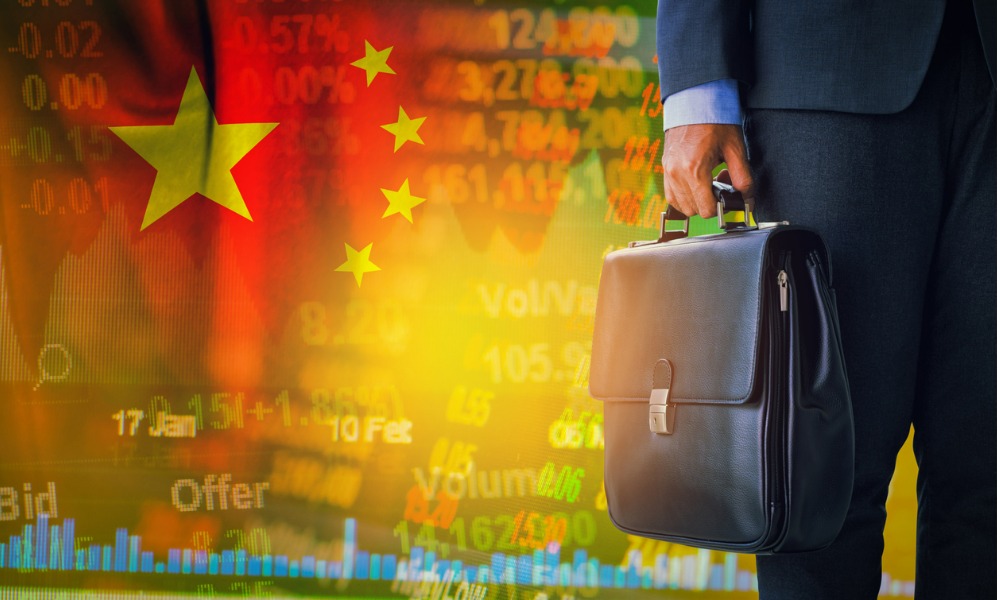BMO GAM head of product Mark Raes pulls back the veil on firm's newly launched Sustainable Opportunities China Equity Fund

Given its position as one of Canada’s largest purveyors of investment funds, it’s no surprise to see BMO strive for a leading position in the sustainable investment space.
In September last year, BMO Investments unveiled a suite of all-in-one Sustainable Investment Portfolios, which sought to give investors single-ticket access to its ESG ETFs and sustainable mutual funds based on their risk tolerances. In January, BMO Global Asset Management committed to supporting investors on their ESG journeys by launching a personality assessment tool that classifies investors into different “ESG personas.”
And more recently, BMO Investments added a slew of new funds and fund series to its suite of sustainability products, among which is the BMO Sustainable Opportunities China Equity Fund.
“I think a lot of people think of responsible investing in developed markets first,” said Mark Raes, head of Product at BMO Global Asset Management. “But there can potentially be bigger opportunities in emerging markets just because of where some of those companies are in the early stages of their life cycles.”
According to Raes, interest in responsible investments has accelerated largely due to a collective awakening among investors. While they may have been able to separate their portfolios from their personal values before, now they’re showing an increased desire to make sure the two areas of their lives are aligned.
As the need for sustainability within retail and institutional portfolios increases, asset managers are reviewing their own product suites for opportunities to integrate ESG into classic themes and strategies. With that in mind, BMO conducted the research and developed the investment thesis necessary to launch its sustainable Chinese equity fund.
“I think investors recognize China as an emerging growth engine for the world,” Raes said. “Some of the returns in the Chinese market have been very strong. Overlaying that with an ESG strategy, or sustainable strategy is something that does appeal to a lot of investors.”
He noted that by getting ESG-based exposure to China, investors have the opportunity to make a huge difference in their portfolios. Aside from the country’s significance as an emerging market, he highlighted the maturing approach to ESG reporting being adopted by Chinese companies. The practice of ESG disclosures among China-based issuers might be in early days compared to developed markets in Europe, the U.S., or Canada, but they’re certainly gaining momentum.
From 500 in 2009, the number of ESG reports published by China A-share companies and CSI 300 constituent firms rose to 1280 in 2020, according to a recent report by Willis Towers Watson. That number promises to increase further from here on in: at a virtual meeting of the U.N. General Assembly last September, President Xi Jinping laid bare plans “to have CO2 emissions peak before 2030 and achieve carbon neutrality before 2060,” which is likely to raise regulatory pressure among companies to be more ESG-friendly.
“Investing in our fund is a great opportunity for Canadians to participate in that evolution of the market,” Raes said.
However, he stressed that a mandate from the top isn’t enough to guarantee good sustainability performance across the whole market. Drawing from ESG ratings data published by MSCI, a March analysis by the World Economic Forum acknowledged that Chinese companies showed improvement between 2018 and 2020, but the majority were still at the lower end of the MSCI ratings scale by the end of the period. Inconsistencies across different ESG ratings bodies used by companies at a local level are also a source of potential confusion.
“It's quite important for us that our fund is managed by active managers on the ground out of Hong Kong, so they're familiar with the local marketplace and what's going on,” Raes said. “They’re able to have those company meetings to really look under the hood in terms of ESG strategies. That’s important for an active strategy like ours; you need to be working directly with the companies to understand what they’re doing, and also to help drive change.”
More broadly, he said that China has been developing over time from being an export-driven economy to having a more solid domestic market. That bolsters the case for portfolio diversification into China, which he said has been borne out by returns from Chinese equities over the last couple of years.
From a sector perspective, he said that a constructive view on the reopening trade occurring across markets is certainly spilling over into BMO’s outlook for China. That means being overweight on financials and consumer stocks, particularly consumer staples, which reflects the developing domestic market that they want to participate in.
“Being a responsible strategy, we're not investing in energy names, and we're underweight resources in general,” Raes said. The strategy is also taking a slight underweight position on information technology stocks, which have seen run-ups in valuations over the past few years and, more recently, increased scrutiny from Chinese regulators concerned about alleged issues including anti-competitive practices and data privacy.
As more and more people look to build sustainable portfolios, BMO is pushing to expand its catalogue with different building blocks of sustainable investment. Given the different demands investors have with respect to their risk tolerance, sector exposures, and geographic diversification, Raes said there’s a greater-than-ever need to offer investors a spectrum of choices.
“Some growth-oriented investors might want to put an overweight to China, while more defensive ESG investors may prefer to underweight,” Raes said. “The whole market of sustainable products has been growing to benefit investors, and a fund like ours allows you to build a portfolio that fits your goals and investing strategy.”



